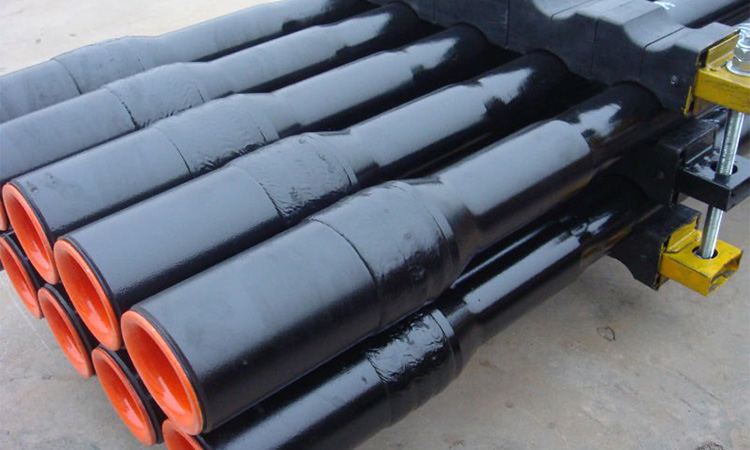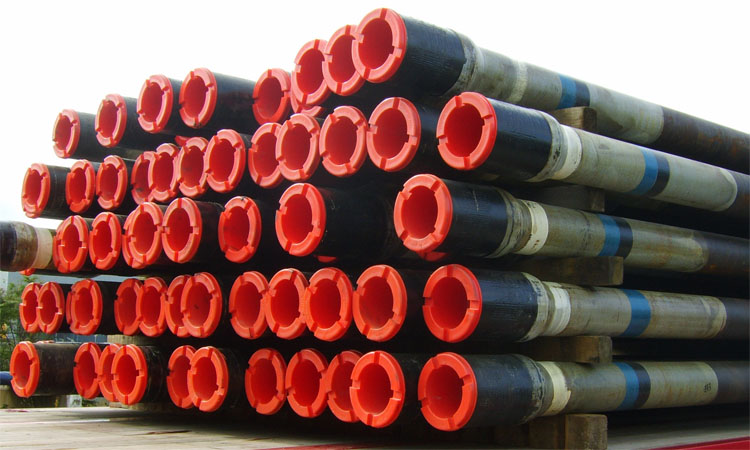Introduction of drilling tools
1. Composition and function of drill strings
Drilling String is the general name for the steel pipe string above the drill bit and below the faucet.
It includes downhole tools such as Square Kelly, Drill Pipe, Drill Collar, various joints and stabilizers.
The function of drill string
(1) Provide drilling fluid flow channels;
(2) Provide drilling weight to the drill bit;
(3)Transfer torque;
(4) Tripping the drill bit;
(5) Measuring well depth;
(6) Observe and understand the underground conditions (drill bit working conditions, wellbore conditions, formation conditions);
(7) Carry out other special operations (coring, cement squeezing, salvage, etc.);
(8) Drill-Stem Testing, also known as mid-course testing.
2. Drill pipe
1)Drill pipe is the basic component of the drill string. It is mainly used to transmit torque, transport drilling fluid, and continuously connect the drill pipe during the drilling process to continuously deepen the depth of the wellbore. Drill pipe is the most severe condition in drilling operations. In addition to torsion, it is also subject to tensile stress caused by the weight of the drill string itself. This stress increases as it goes up.
Drill pipe can be divided into ordinary drill pipe and Heavy Weight drill pipe.
Ordinary drill pipe is the main component of the drill string. The upper part is connected to the kelly and the lower part is connected to the drill collar. Its function is to transmit torque to make the drill bit drill down and deepen the wellbore.
Heavy Weight drill pipe is the transition drill string section between ordinary drill pipe and drill collar. It can effectively alleviate the stress concentration in the transition section between drill collar and drill pipe, provide drilling pressure and effectively reduce the friction between drill string and well wall. contact area and outer diameter wear rate. Weighted drill pipe is mainly used for power transmission in the deflection curvature section and horizontal section of drilling, and its flexibility is used to ensure logging and directional requirements during drilling.
2)Fittings and threads
Thread connection conditions: equal size, same thread type, male and female threads matching.
Drill pipe joint features: larger wall thickness, larger outer diameter, and higher strength.
Drill pipe joint type:
Inner flat (IF), through the eye (FH), regular (REG); NC series
Internal flat type: mainly used for externally thickened drill pipes. The characteristic is that the inner diameter of the drill pipe is the same, and the drilling fluid flow resistance is small; but the outer diameter is larger and easy to wear.
Through-hole type: mainly used for internal thickening of drill pipe. Its characteristic is that the drill pipe has two inner diameters. The drilling fluid flow resistance is greater than the inner flat type, but its outer diameter is smaller than the inner flat type.
Formal type: Mainly used for internally thickened drill pipes, drill bits, and fishing tools. Its characteristic is that the inner diameter of the joint <the inner diameter of the thickened part <the inner diameter of the pipe, the drilling fluid flow resistance is large, but the outer diameter is the smallest and the strength is high.
This type of joints all use V-shaped threads, but the buckle type, buckle pitch, taper and size are very different.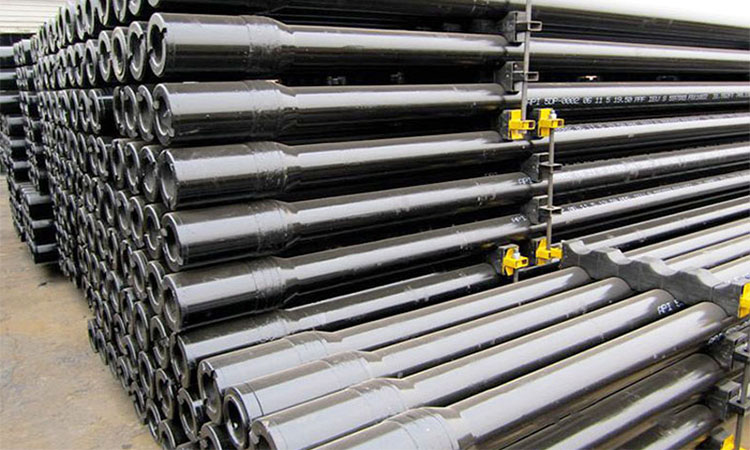
1) Drill collar description
The drill collar is located at the lower end of the drill string and is the main component of the lower drill tool assembly. Both ends of the pipe body are directly machined with threaded buckles, without special joints; the wall thickness is large (38-53 mm), the weight is large, and the stiffness is high.
During the drilling process, it mainly plays the following roles: ① Apply drilling pressure to the drill bit; ② Ensure the necessary strength under compression conditions; ③ Reduce the vibration, swing, and beating of the drill bit to make the drill bit work smoothly. ④Control well deviation.
Drill collars are generally divided into three types: spiral drill collars, non-magnetic drill collars, and overall cylindrical drill collars.
(1)The integral cylindrical drill collar is a smooth thick-walled circular tube with threads processed on both ends;
(2) The spiral drill collar is machined with three right-hand spiral grooves on the outer cylindrical surface of the round drill collar to reduce the contact area with the well wall and effectively prevent pressure differential stuck;
(3) Non-magnetic drill collars are mainly used for testing during oil drilling, and their structures are the same as integral drill collars. Non-magnetic drill collars are made of N1310 low carbon alloy steel. The material is forged through strict chemical composition analysis. The material has been tested for mechanical properties to ensure that the hardness, toughness, impact value and corrosion resistance meet the standards, and has good Low magnetic permeability and good machining properties.
In order to facilitate drilling work, elevator grooves and slip grooves can be processed on the outer surface of the internal thread of the drill collar. According to the drilling construction conditions, the stress relief mechanism and cold processing can be selected for the drill collar thread. The stress relief mechanism and cold processing can effectively reduce the fatigue failure of the thread; the drill collar thread and shoulder surface are copper plated or phosphated.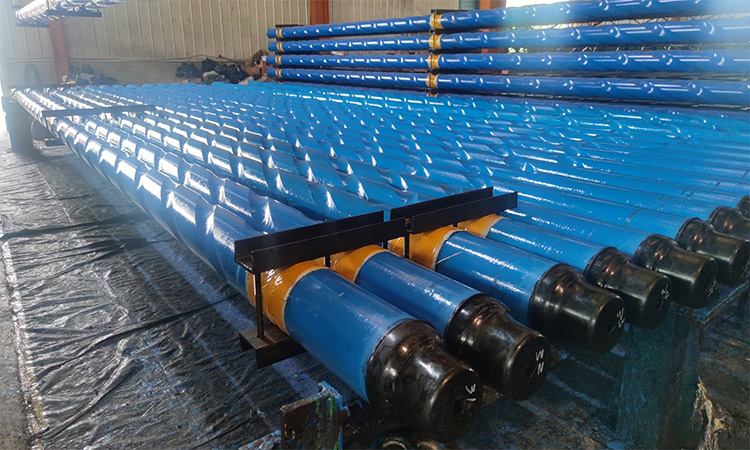
The kelly is located at the top of the drill string and has two types: square and hexagonal. In rotary drilling, the kelly cooperates with the square core and the rotary core during drilling to transfer the torque of the ground rotary table to the drill pipe. It drives the drill bit to rotate and bears the hanging weight of the drill string; in turbine and screw drilling, it bears the hanging weight and reaction torque of the drill string.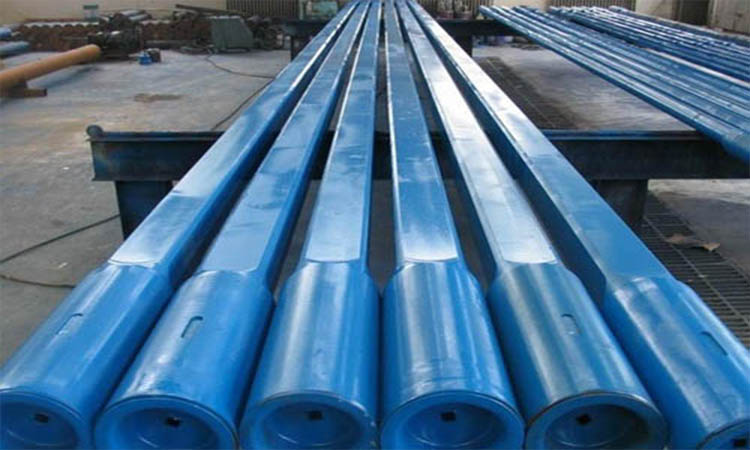
Type: Rigid stabilizer, non-rotating rubber sleeve stabilizer, roller stabilizer.
effect:
1) Anti-tilt;
2) Control the wellbore trajectory
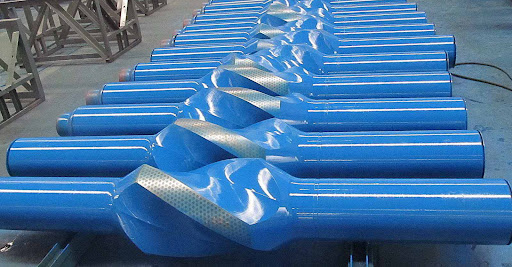
6.The working status of the drill string
1) Under tripping conditions
Straight Well: Straight stretching, sliding.
Inclined well: Sliding as the wellbore tilts and curves.
2) Under normal drilling conditions
The upper part is stretched and the lower part is compressed and bent; it rotates under the action of torque.
3) The rotational motion form of the drill string
(1) Rotation The drill string is like a flexible shaft, rotating around its own axis. Uniform wear and prone to fatigue damage.
(2) Revolution The drill string is like a rigid body, rotating around the wellbore axis and sliding along the wellbore wall. Produces eccentric wear.
(3) Combination of revolution and rotation
The curved drill string rotates around the wellbore axis while moving around its own axis.
(4) Longitudinal vibration is caused by drill bit vibration, producing alternating stress.
(5) Torsional vibration is caused by changes in the resistance of the bottom of the well to the rotation of the drill bit, resulting in alternating torsional shear stress.
(6) When the lateral oscillation reaches a certain critical speed, irregular oscillation may occur, resulting in alternating bending stress.
It is generally believed that the main form of rotation of the curved drill string is rotation, but revolution or a combination of the two forms of motion may also occur. Due to the resistance during rotation, the rotation of the drilling tool is unstable.
7.Basic principles of selection
1)Since drill pipes are subject to the greatest torque and tension, large-size kelly pipes should be used as much as possible when possible, which should be one level larger than the drill pipe size;
2) When the lifting capacity of the drilling rig allows, it is advantageous to choose large-size drill pipes. Because the large-size drill pipe has high strength and large water holes, the drilling fluid flow resistance is small, and because the annulus is small, the drilling fluid returns at a high speed, which is conducive to carrying cuttings. The structure of the drill string entering the well should be kept simple to facilitate tripping operations.
3)The size of the drill collar determines the effective diameter of the wellbore. In order to ensure that the drilled wellbore can smoothly run the casing or milling barrel, the outer diameter of the lowermost section of the drill collar (generally at least one column) should not be Less than the allowable minimum outer diameter, the allowable minimum drill collar outer diameter is: Allowable minimum drill collar outer diameter = 2 × casing coupling outer diameter - drill bit diameter When a stabilizer is used in the drill collar column, a slightly smaller outer diameter can be selected Drill Collar. The maximum outer diameter drill collar selected in the drill collar column should be premised on ensuring that it can be milled during possible salvage operations. In wellbore holes larger than 241.3mm, a composite drill collar structure should be used. However, the outer diameter of two adjacent drill collar sections is generally not more than 25.4mm.
4)The drill collar size is generally selected to be equal to or similar to the outer diameter of the drill pipe joint. Sometimes the diameter of the drill collar is selected based on anti-deviation measures. In recent years, large-diameter drill collars have been increasingly used in lower drill tool assemblies because the use of large-diameter drill collars has the following advantages: (1) using fewer drill collars to meet the required drilling weight requirements and reducing drill collars, It can also reduce the time to connect the drill collar when tripping; (2) The stiffness of the drill string near the drill bit is improved, which is beneficial to improving the drill bit working condition; (3) The gap between the drill collar and the well wall is small, which can reduce the friction of the connecting part. Fatigue damage.
Sino Mechanical Equipment is a high-tech enterprise that provides various drilling tools for the exploration and development of oil, natural gas and other oil and gas energy. It is committed to developing and providing high-quality oil drilling equipment to meet the changing needs of customers and contribute more to the development of the petroleum industry.

